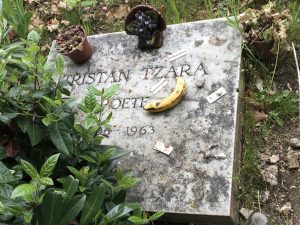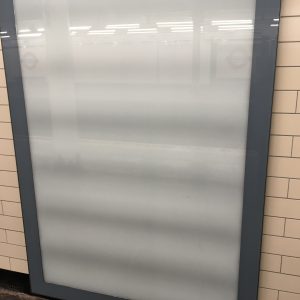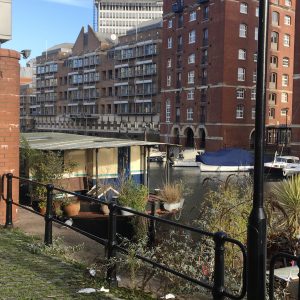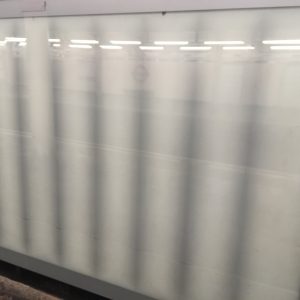Montparnasse Cemetery, Paris XIV:

Archive for the ‘Places’ Category
Page 3 of 7
Czech architects in Japan
For reasons unclear to me, I am interested in the lives of Czech architects who worked in Japan. I welcome additions and corrections to this list.
- Karel Jan Hora (1881-1974)
- Jan Letzel (1880-1925)
- Antonin Raymond (1888-1976)
- Frantisek Sammer (1907-1973)
The Matthew
Replica of The Matthew, ship sailed by John Cabot from Bristol to North America in 1497.
Bristol life
Bristol life
Bristol 28 vs. Worcester Warriors 20, Ashton Gate Stadium Bristol, Boxing Day 2016. Gate of 16K.
London life
Brussels life
Caning John Pilger
Wilfred Burchett (1911-1983) was a brave and intrepid Australian journalist who mainly reported from the other side in the Cold War. He was the first western reporter to visit Hiroshima after the atomic bomb was dropped on the city, something he did without permission from the US Occupation authorities, and was thus able to counter attempted US military lies and disinformation about what we now know was radiation poisoning; he did this most dramatically at a US military press conference in Japan immediately after his visit to the city. For many years in the 1950s and 1960s, conservative Australian Governments unjustly refused to renew Burchett’s Australian passport, something only remedied by the incoming Labor administration of Gough Whitlam on 6 December 1972, four days after Labor’s election win. That Burchett may possibly have self-censored his writing for his Socialist Bloc hosts (or worse, been their dupe) does not diminish the wrong he suffered at the hands of petty conservative Australian governments.
Another Australian journo, John Pilger, wrote a preface to a collection on articles about Burchett, edited by Ben Kiernen in 1986. On the second page of his preface, Pilger quotes from Burchett’s autiobiography, and then commits a schoolboy howler. “Soon afterwards [Pilger writes, page x], Wilfred went ‘on the road with a swag’ and in Queensland was adopted by a group of cane-cutters . . . ”
No, Mr Pilger, no! Although Burchett is careful not to name the location of the sugarcane farm he worked on, he says (page 62) it is on an arm of the Clarence River, upstream from a sugar-mill whose chimney effusions he could smell and possibly also see, on a large island bisected by a canal with horse-drawn barges transporting bundles of cut cane. The mill would be the one at Harwood (still in operation today, thanks to former state MP, Don Day), and the island most likely Palmers Island. Other large islands upstream of the Harwood Mill would be Harwood Island itself or Chatsworth Island, but these are not bisected by canals. But all of these, including the entire mouth of the Clarence River are in New South Wales, Mr Pilger, not Queensland.
Burchett is briefly mentioned as a social acquaintance of Guy Burgess in Moscow in the 1950s in the recent biography of Burgess by Andrew Lownie, reviewed here.
References:
Wilfred Burchett [1969]: Passport: An Autobiography. Melbourne, Australia: Nelson.
Ben Kiernan (Editor) [1986]: Burchett Reporting the Other Side of the World 1939-1983. London, UK: Quartet.
More minimalist art at Temple Station
Following the previous exhibition, described here, more optic minimalism at Temple Underground Station:

Central London churches
A list of some London churches and their denominations, updated as I visit them:
- All Hallows by the Tower, Tower Hill / Anglican
- All Saints Cathedral, Camden / Greek Orthodox, originally Anglican
- Bloomsbury Central Baptist Church, Bloomsbury / Baptist
- Chapel of King’s College London / Anglican
- Chapel of Hospital of St John and St. Elizabeth, St John’s Wood / Roman Catholic
- Chapel of St. Thomas’ Hospital, Lambeth / Anglican
- Christ Church, Spitalfields / Anglican
- Christ-the-King, Gordon Square / Catholic Apostolic
- Corpus Christi, Maiden Lane, Covent Garden / Roman Catholic
- St Cyprian’s Church, Clarence Gate / High Church Anglican
- Emmanuel Temple, Westminster / Evangelical Christian
- Finchley Quaker Meeting House / Society of Friends
- Friends House, Euston / Society of Friends
- St George’s, Hanover Square / Anglican
- Holy Trinity, Marylebone / Anglican
- Holy Trinity, Sloane Square / Anglican
- The Little Oratory Chapel, Kensington / Roman Catholic
- Queen’s Chapel of the Savoy / Anglican
- St Andrew Undershaft, St Mary Axe / Anglican
- St Anselm and St Cecilia, Holborn / Roman Catholic
- St Bride’s, Fleet Street (the Journalists’ Church) / Anglican
- St Clement Danes / Anglican (the home church of the RAF)
- St Clement’s Eastcheap / Anglican
- St Dunstan-in-the-West, Fleet Street / Anglican and Romanian Orthodox
- St Etheldreda’s, Ely Place, Holborn / Roman Catholic
- St Giles Cripplegate, Barbican / Anglican
- St Giles-in-the-Fields / Anglican
- Church of the Immaculate Conception, Farm Street, Mayfair / Jesuit, Roman Catholic
- St James, Piccadilly / Anglican
- St James, Sussex Gardens / Anglican
- St John’s, Smith Square / formerly Anglican
- St John’s, Waterloo /Anglican
- St John’s Wood Church / Anglican
- St Katherine Cree, Leadenhall / Anglican
- St Luke’s, Old Street / formerly Anglican
- St Magnus the Martyr, Monument / Anglican
- St Margaret, Lothbury / Anglican
- St Margaret’s Putney / Anglican
- St Martin, Ludgate (the Guild Church of St Martin-within-Ludgate) / Anglican
- St Mary Abbots, Kensington / Anglican
- St Mary Aldermary / Anglican
- St Mary, Finchley East / Roman Catholic
- St Marylebone, Marylebone / Anglican
- St Mary-le-Bow / Anglican
- St Mary-le-Strand / Anglican
- St Mary Moorfields / Roman Catholic
- St Mary Woolnoth / Anglican
- Church of the Most Precious Blood, Borough / Roman Catholic – Ordinariate of Our Lady of Walsingham
- St Pancras New Church, Euston / Anglican
- St Pancras Old Church, Somers Town / Anglican
- St Paul’s, Hammersmith / Anglican
- St Paul’s Cathedral / Anglican
- St Paul’s Church, Covent Garden (the Actors’ Church) / Anglican
- St Peter’s Church on Eaton Square / Anglican
- St Peter’s Italian Church, Holborn / Roman Catholic
- St Sepulchre-without-Newgate / Anglican
- St Stephen’s Church, Rosslyn Hill, Hampstead / formerly Anglican
- St Stephen Walbrook / Anglican
- Swiss Church, Endell Street / Protestant
- Temple Church / Anglican
- Wesley’s Chapel, Finsbury / Methodist
- Westminster Cathedral / Roman Catholic
- Westminster Quaker Meeting House / Society of Friends



